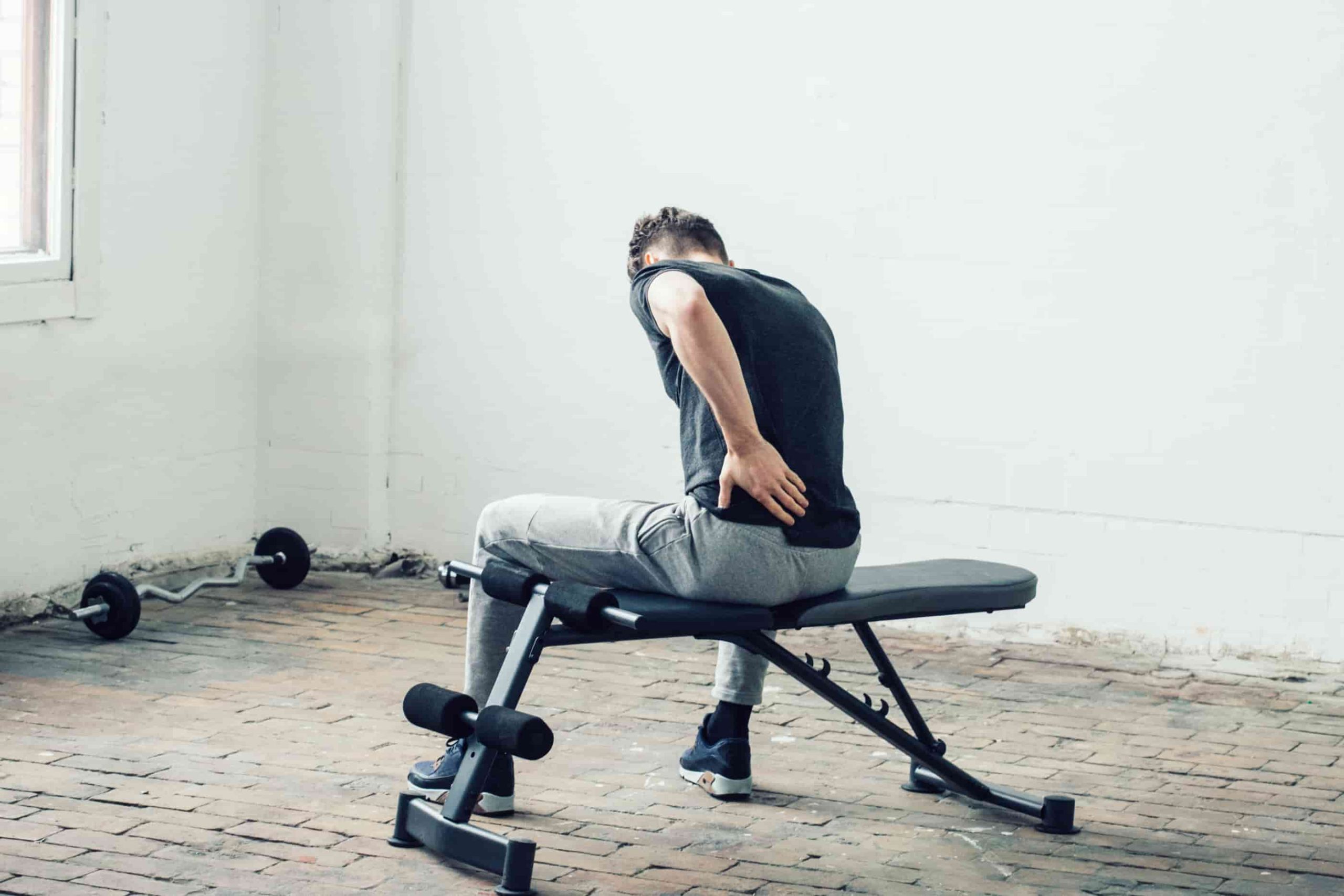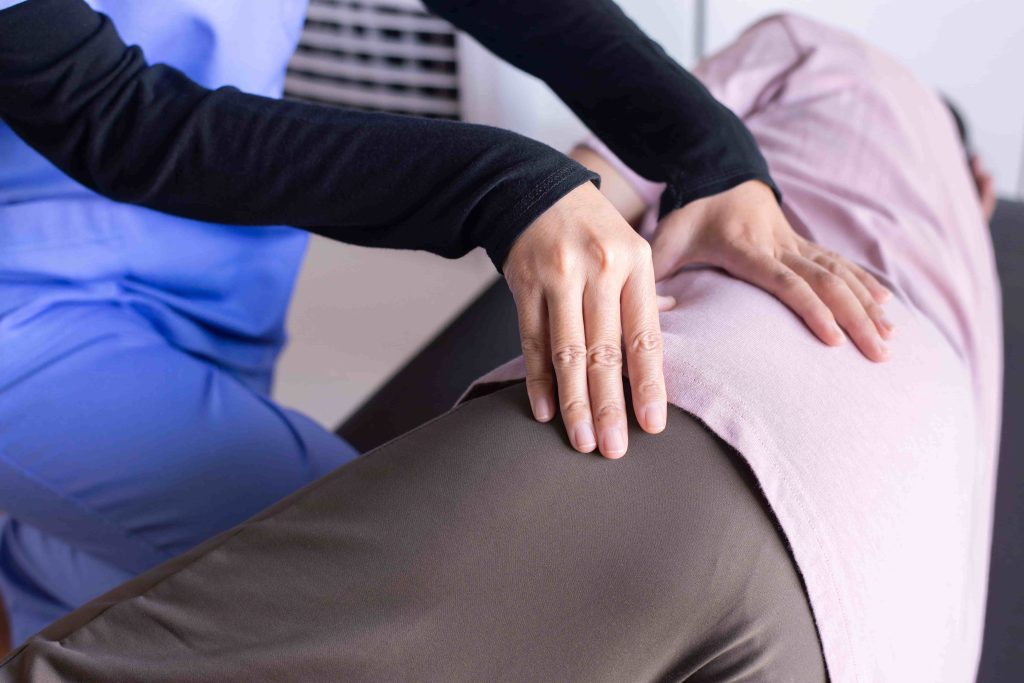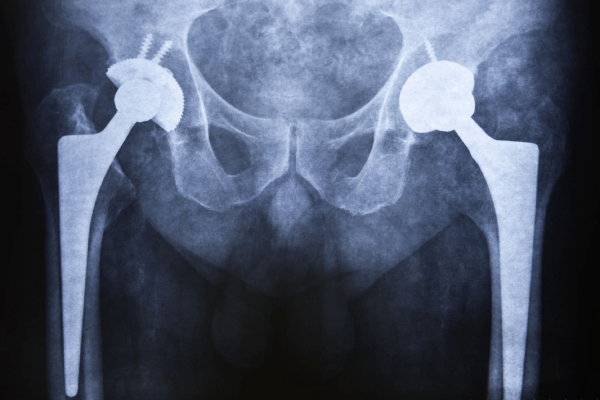Which Country is The Best for Hip Replacement Surgery?

Hip replacements are serious operations. Therefore, you should know the requirements of the operation and be able to choose the best country. You can read our content to get detailed information about Hip Replacement Surgeries.
What is Hip Replacement?
If the hip has been damaged by arthritis, fracture, or other conditions, general activities such as walking or getting up from a chair can be painful and difficult. Besides being difficult, it is also quite painful. This can cause so much pain that you can’t even sleep, as well as make you unable to carry on with your routine life.
If the medications you take for any problems with your hip, changes in your daily activities, and the use of walking aids do not help your symptoms adequately, you may consider hip replacement surgery. Hip replacement surgery is a safe and effective procedure that can reduce your pain, increase movement, and help you return to your normal, daily activities.
For this reason, many patients who have problems in the hip joint can almost regain their old healthy hip functions and return to their daily life with this surgery.
So, what is hip pain? Why does it happen? What is hip replacement operation? How is it done? It will be normal for you to wonder a lot of things about prices and the healing process. You can get information about all these by reading our content.

What Causes Hip Pain?
The most common cause of chronic hip pain and disability is arthritis. (Inflammation of the Joints) Osteoarthritis, rheumatoid arthritis and traumatic arthritis are the most common forms of this disease. Bugs, besides this, can experience hip pain for many reasons;
Calcification: It is the most common joint disease worldwide. Its medical name is osteoarthritis. It is a type of arthritis that often develops with age. develops due to wear and tear. The cartilage that cushions the hip bones wears away. The bones then rub together, causing hip pain and stiffness. This may cause the patient to experience unbearable pain and limitation of movement.
Rheumatoid arthritis: This is an autoimmune disease in which the synovial lining becomes inflamed and thickened. This chronic inflammation can damage cartilage, causing pain and stiffness. Rheumatoid arthritis is the most common type of a group of disorders called “inflammatory arthritis.”
Post-traumatic arthritis: This can happen with a serious hip injury or fracture. Falls, accidents, or other injuries can result in the development of these joint sports. It is one of the common joint problems.
Osteonecrosis: A hip injury, such as a dislocation or fracture, can limit blood flow to the femoral head. This is called osteonecrosis. The lack of blood can cause the surface of the bone to collapse and arthritis occurs. Some diseases can also cause osteonecrosis.
Childhood hip disease: Some babies and children have hip problems. Although the problems are successfully treated in childhood, they can cause arthritis later in life. This is because the hip does not grow normally and the joint surfaces are affected.
Do I Need a Hip Replacement?
Hip replacement is not an easy surgery. It is a fairly major surgery that has both surgery and recovery, so it is often offered to the patient as a last resort. It is only recommended if physiotherapy or other treatments such as steroid injections have not helped reduce pain or improve mobility.
To determine whether patients need a hip replacement, the patient must experience the following;
- If you have severe pain in the hip joint
- If there is swelling in the hip joint
- If you have stiffness in the hip joint
- If mobility is restricted
- If you have an uncomfortable sleep routine, such as not being able to sleep or waking up due to hip pain
- If you cannot do your daily work alone,
- Do you feel depressed due to pain and limitation of movement?
- If you can’t work
- If you have withdrawn from your social life

Hip Replacement Risks
First of all, hip replacements have risks like any surgery. On the other hand, hip replacement is usually a necessary surgery for slightly older people. Therefore, risks and complications may be more likely for older people. However, this is nothing to worry about. If you prefer to receive treatment from successful and experienced surgeons, your doctor will provide the best treatment for you. Therefore, we can continue reading our content.
Thus, you can easily choose the best country to have a hip replacement and get treatment from the surgeons in that country. Thus, your risk of complications will be less and your recovery process at home will go better.
Blood clots: Clots can form in your leg veins during or after surgery. This can be dangerous because a piece of a clot can break off and travel to your lungs, heart or, rarely, your brain. Your doctor may prescribe blood-thinning medications to reduce this risk. At the same time, these drugs will be given through your vein during the surgery.
Infection: Infections can occur at your incision site and in the deeper tissue near your new hip. Most infections are treated with antibiotics. However, it would be a better choice to have no infection at all than to treat it. For this, you should take care to receive treatment in a hygienic environment. Thus, your risk of infection will be less and your recovery period will be shortened.
Fracture: During surgery, healthy parts of your hip joint may be broken. Sometimes fractures are small enough to heal on their own, but larger fractures may need to be stabilized with wires, screws, and possibly a metal plate or bone graft.
Dislocation: Some positions may cause the ball of your new joint to come out of the socket, especially in the first few months after surgery. If you have a hip dislocation, your doctor may recommend that you wear a surgical corset to keep the hip in the correct position. If your hip continues to protrude, surgery is usually required to stabilize it.
Change in leg length: Your surgeon will take steps to prevent the problem, but sometimes a new hip will make one leg longer or shorter than the other. Sometimes this is due to the muscles around the hip contracting. Therefore, after the operation, you should do the necessary exercises and understand if there is such a problem. This explains the importance of getting surgery from successful surgeons. With the treatments you will receive from experienced surgeons, such risks will be less.

Preparation for Hip Replacement Surgery
Your Pain Will End: Your pain, which is the biggest factor that causes you to have surgery, will end. The condition of your damaged bone causing pain due to rubbing will be completely gone or will be greatly reduced. Thus, your quality of life will be as good as before. You will have a comfortable sleep level. This will also help you relax psychologically.
Enhanced Motion Function: The limitation of movement in your hip will be greatly reduced and will return to your normal movements over time. Thus, you can comfortably do your daily chores such as working, walking, wearing socks and using stairs. At the same time, your need for help will cease due to the limitation of movement, and this will also solve your psychological problems. On the other hand, remember that your motion function will not be restored by surgery alone. For this, after the operation, you must do the necessary exercises and regain your normal functions.
Permanent Treatment: Your hip replacement is not a condition that requires repeated surgery. After a single operation, it will be permanent, with the necessary exercises and medications. According to studies, 85% of patients who received a hip replacement were able to comfortably use the hip replacement for at least 25 years. Longer use is also possible, but it depends on the use of the patient. If it moves correctly and there is no inactivity, trouble-free use will continue for a much longer time.
How is Hip Replacement Surgery Performed?
First of all, an intravenous line will be opened in your arm or on the top of your hand for all preparations. This vascular access is for the administration of necessary drugs during surgery. You will then be put to sleep. Thus, the process will begin. First of all, a strezilezed liquid will be applied to your buttocks on the side of the surgery. This is necessary to avoid infection during the incision.
Your hip bone will then be reached and the Bone will be cut. Only the damaged bone will be cut and removed without touching the healthy bones. The prosthetic socket will be placed in your pelvis to replace the damaged bone.
It replaces the round ball at the top of your thighbone with a prosthetic ball attached to a handle that fits on your thighbone. Compatibility is checked. If all is well, the process will be finished. Stitches are removed and the operation is finished.
Recovery process after Hip Procedure
Although your recovery will start at the hospital, what you need to do will begin after you are discharged. For this reason, you will need to have a relative with you on your first day at home and during your recovery process. Because right after the operation, you will not be good enough to fulfill many of your needs on your own yet. It will be wrong for you to perform functions such as bending and walking.
On the other hand, although the recovery process for each patient is different, it is usually possible to recover within a few weeks. To return to work or school, 6 weeks will suffice. At the same time, in this process, you should use the drugs given by your doctor, and do the exercises given by the physiotherapist. To give a few examples, the exercises your physiotherapist gave you would include the following exercises.
Exercises After Hip Procedure
You can prevent the formation of blood clots by increasing the blood circulation in your legs and feet with exercises. These movements are also important in increasing muscle strength and correcting hip movements. You can start these movements as soon as you feel yourself after the surgery. These movements, which may seem difficult at first, will speed up your recovery and reduce your post-operative pain. You should do these movements while lying on your back with your legs 15-20 cm apart.
- Ankle Rotation: Rotate your foot in and out from the ankle. Repeat this movement 10 times, 3-4 times a day.
- Bed Supported Knee Bend : Bend your knee by sliding your heel toward your buttocks and don’t lift your heel off the bed. Do not allow your knee to roll inwards.
- Hip Muscle: Contract the buttocks and count to 5.
- Opening Exercise: Open and close your leg outward as far as you can.
- Thigh Set Workout: Contracting your thigh muscle, press your knee into the bed and hold for 5-10 seconds. Do this exercise 10 times for 10-minute periods until your thigh muscle gets tired.
- Straight Leg Lift: Contract your thigh so that the back of your knee touches the bed completely, and raise your leg for 10 seconds and lower it slowly so that your heel is 5-10 cm above the bed. Do this exercise 10 times for 10-minute periods until your thigh muscle gets tired.
- Standing Knee Lift: Lift your operated leg towards your body and hold it for 2-3 seconds and lower it. Do not raise your knee higher than your wrist
- Standing Hip Opening: Align your hips, knees and feet. Keep your torso upright. With your knee stretched, open your leg to the side. Slowly bring your leg back into place and the soles of your feet back on the floor.
- Standing Back Hip Opening: Slowly lift your operated leg back; Hold for 3-4 seconds and slowly take your leg back and press the soles of your feet back on the ground.
- Walking and Early Activities: Shortly after your surgery, you will do short walks and light (easy) daily activities in the hospital. These early activities will strengthen your hips and speed up your recovery.
- Walking with a Walker: Stand up and straighten your torso and stand with support from your walker. Move your walker forward 15-20 cm. Next, step up by raising your operated leg; Press your heels first, then the soles of your feet and your toes into the ground. During your step, your knee and ankle will be bent and your foot will be on the ground. Then throw your other leg.
- Walking with a Stick or Crutches: After using a walker to maintain your balance for the first few weeks after the surgery, you may need to use a cane or crutches for a few more weeks until your balance and muscle strength are fully restored. You should hold the crutch or cane with your arm on the opposite side of the operated hip.
- Stair Climbing:Going up and down stairs is a process that requires both flexibility and strength. In the beginning, you should support the handrail and take one step at a time.

Things to Consider When Choosing a Country for Hip Replacement Surgery
First of all, as in every treatment, there are some criteria in choosing a country for hip replacement. While these are important for patients to receive more successful treatments and shorter recovery times, they must also be cost effective. Because of all these, the country to be chosen should be advantageous in every respect.
While there are many countries that offer successful treatments, most provide treatment at very high prices. Or there are countries that offer treatments at very affordable prices. But their success is uncertain. Therefore, the patient should do a good research and make a decision about the country. But which country is the best?
First of all, let’s compare the countries with all these criteria. Thus, in which countries are successful treatments possible? In which countries Affordable countries are possible, let’s examine.
| Germany | Switzerland | USA | India | Turkey | Poland | |
| Treatments Affordable | X | X | X | ✓ | ✓ | ✓ |
| Treatments have a high success rate | ✓ | ✓ | ✓ | X | ✓ | X |
Successful Countries in Hip Replacement Surgery
Hip Replacement Surgery in Germany
Germany is a country that provides very successful treatments with its advanced health system. However, of course, it is possible to encounter some problems. Sample; Germany’s healthcare system is based on equality and fairness. In addition, it cannot be said that he was successful in emergency treatments. For this reason, patients have to wait for a long time to receive treatment, no matter how painful their hip is. This means that the treatment of unbearable pain will be delayed. This, of course, will require longer time to return to your routine life. On the other hand, the extremely high cost of living in Germany will cause patients to pay a lot of money for treatments as well.

Hip Replacement Surgery in Switzerland
The achievements of Switzerland in the field of health are known by most people. Thanks to its clinical trials, successful operations and technological developments in the field of medicine, it is able to perform almost many surgeries extremely successfully. What about Prices? Just as you have just read, countries will either be successful and highly priced or without success and cheap. For this reason, it would not be correct to say that Switzerland is a good location for these treatments. Those who want to pay a fortune for treatments can still consider this country. You can easily examine the prices in the table below.
Hip Replacement Surgery in USA
USA is another successful country that provides treatment at international health standards. The same is true for the USA. Besides being successful, more prices will be asked from the other two countries. It will also have a waiting period, just like Germany. The high number of patients is a condition that prevents you from receiving treatments early. For this reason, their doctors will not be able to provide sufficient attention in a short time.
Hip Replacement Surgery in India
India is a country of choice for inexpensive treatments rather than successful treatments. So, will this be a bad decision? The answer is often yes! You know that India is an unhygienic country as a country. This will enable unhygienic people to cause unsuccessful treatments for the same reasons in the field of health. In any case, the reason for the operation will be infection and inflammation in the joint most of the time. How accurate would it be to choose an unhygienic country to treat this?
If we look at the prices, it is extremely affordable. It will be easy for you to receive treatment by paying half the treatment in Germany. What if a new operation is required in case of any problems? The price will be more and it will be a painful process.

Hip Replacement Surgery in Poland
While Poland may not be as affordable as India, it will not charge as high as the United States. But are the treatments worth the price?
To be able to answer this, you first need to have an idea about Poland’s healthcare system. With a little research, you will see that there is a health system that has not improved for many years.
It is a country where even adequate medical drug support cannot be provided. Therefore, you must decide how accurate it will be for an important operation such as a hip replacement. At the same time, waiting lines will be formed as the number of specialist doctors in Poland is low. Therefore, you should do all the necessary research and choose the best country.
Hip Replacement Surgery in Turkey
Turkey at last! It would not be wrong to say that Turkey is the best country that offers treatments as successful as Switzerland and prices as affordable as India! The health system is extremely successful, the use of technology in the field of medicine is widespread and it is a very successful country in health tourism with affordable treatments. How ? You can continue reading our content for more detailed information. Thus, you can learn about the advantages and prices of getting hip replacement treatment in Turkey.
Is It Possible to Get Successful Hip Replacement Surgery in Turkey?
A country that can meet all of the above criteria!
Would you like to learn about the advantages of being treated in Turkey?
Advanced Technology in Medicine: Hip replacement surgeries should be performed with extreme care and no problems should occur. For this, it is important to use the necessary technology. You can get treatment in Turkey with Robotic surgery, which is not widely used in many countries yet. Robotic surgery, which is used in many areas, provides a very successful treatment in hip replacement surgeries. Many patients prefer Robotic Hip Replacement surgeries with a shorter and painless recovery period.
Experienced Surgeons: The fact that Turkey is very successful in the field of health has enabled surgeons to gain experience. Surgeons perform tens of thousands of orthopedic surgeries every year, so they are experienced against many complications. In the face of any unexpected situation during the operation, the Surgeon will be calm and apply the best option for the patient. This is a very important criterion for surgery. At the same time, the probability of experiencing many of the above-mentioned risks will be extremely low.
Affordable Treatments: There are many successful countries for treatment. You would also like it to be extremely affordable, right? The cost of living in Turkey is quite cheap. On the other hand, the exchange rate in Turkey is extremely high. This ensures that foreign patients can receive treatment at very affordable prices.

Hip Replacement Surgery Countries and Prices
| | Germany | Switzerland | USA | India | Poland |
| Price | 25.000€ | 35.000€ | 40.000€ | 5.000€ | 8.000€ |
Hip Replacement Surgery Price in Turkey
You have seen the prices above. Pretty High, isn’t it? In India, which is the most affordable, you will need to know the consequences of getting treatment. Instead of all these, you can get affordable treatments with high success rates by getting treatment in Turkey. So you will be extremely advantageous. It is possible to be treated in Turkey at much more affordable prices than in India. You can contact us to save even more.
Thus, you can get treatment at the best prices in Turkey. At the same time, you can save even more by choosing the packages we have for your non-therapeutic needs.
Packages;
It will cover many of your needs such as accommodation, breakfast, transfers in a 5-star hotel. So you won’t have to pay extra money every time.



